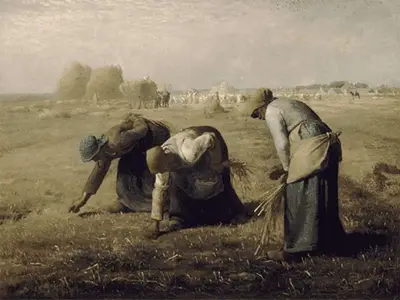Realism was the first modern movement in art that rejected traditional forms of art and literature. It was initiated in France in the 1840s and is widely recognized as the beginning of the avant-garde movement. Its radicalisation was initiated by the artists who brought everyday life into their work.
Realism is widely regarded as the start of modern art. This is owing to its belief that daily life and the modern world were appropriate subjects for art. Philosophically, Realism adopted modernism’s radical goals, finding new truths through the re-examination and overturning of traditional value and belief systems.
Realism was interested in the social, economic, political, and cultural structures of life in the mid-nineteenth century.
This resulted in unflinching, often “ugly” depictions of life’s painful moments, as well as the use of dark, earthy palettes that challenged high art’s ultimate beauty standards.
The first consciously anti-institutional and nonconformist art movement was realism.
The social mores and ideals of the middle class and monarchy, who patronised the art market, were targeted by realist painters.
They continued to send works to the official Academy of Art Salons, but they were not afraid to hold their own exhibits to defiantly display their work.
Following the Industrial Revolution’s rise in newspaper printing and mass media, Realism introduced a revolutionary idea of the artist as a self-publicist.
Gustave Courbet, Édouard Manet, and others deliberately courted controversy and used the media to boost their celebrity, a practice that continues to this day among musicians.
Information Citations
En.wikipedia.org, https://en.wikipedia.org/.






















